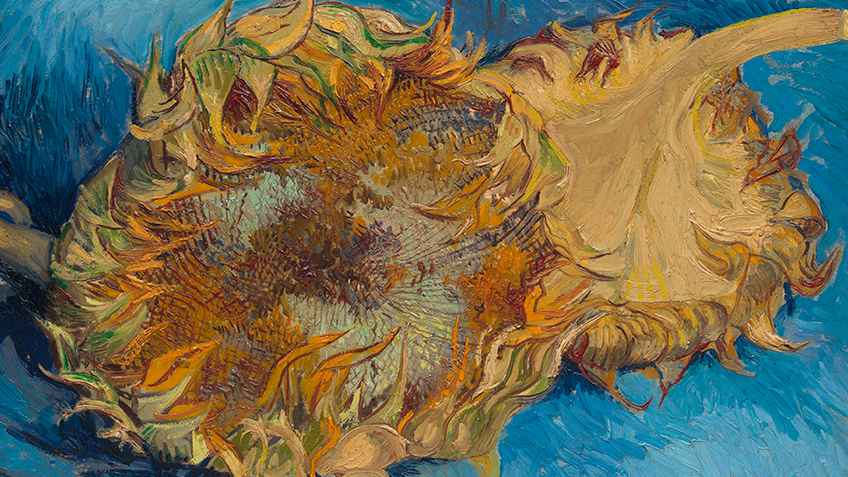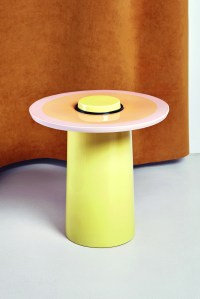The Colour Bible: A fascinating insight into the meaning of colours

An interview with Laura Perryman, Author of The Colour Bible
When writing The Colour Bible, which colour and it’s physiological/psychological effects most surprised you?
I had an understanding that some colours already had certain associations and effects. But an often dismissed colour area – pink (for its obvious gendered connotation) I found is a fantastic secret weapon with an array of nuances all with very interesting background histories. One of the book’s entries Baker-Miller Pink I selected because of its proven ability to lower heart rate and have a calming effect, its past – a paint colour created in the 1950’s to combat aggression in prison inmates – also points also to the future, and the emerging field of neuroaesthetics (the scientific study of aesthetics and colour on brain function). This area of research is starting to prove out with data just how beneficial applying the right colour is. For instance, the performance clothing brand, Vollebak has designed clothing specifically in this shade to help athletes prepare for endurance events. Users zip-up entirely; enveloped in the colour, their heart rate slows, which is key if staying calm is a matter of success or failure.
It’s surprising, and as a consequence, it changes the perception of colour – pink is a powerful shade, and has become now a modern necessity, shirking off its girly past life.
How has the use and meaning of a particular colour evolved over time?
Lots of the colours in this book show how the use and meaning of colour has shifted dramatically – and this aspect is what really excited me to write the book. As a trend forecaster, I am always looking for cultural signals but also innovations that will truly move us forward. Today, colour has evolved and is useful beyond pure aesthetic appeal; it can aid, guide, and connect objects, services, people, and communities. How we use it today – for good reason – is different from the past.
Purple for instance and a memorable one – Tyrian Purple, famously made from crushed-up snail shells – is a deeply historical tone. It adorned what was exclusive, became deployed for royal garments and for those that could afford it. The colour defined social class and identity. However, it naturally faded, and lost its lustre to the sun, as it was of course only natural. Cut to Henry Perkin and the creation of Mauve in 1856, marking an era of textile mass production and the dawn of synthetic colour. Bright, brash, saturated pinks and purples adorned lustrous fabrics including silk and satin – this invention democratised colour for everyone to wear.
Now thousands of synthetic dyes are used in the manufacturing of millions of tonnes of textile products. These synthetic dyes are predominantly fossil fuel and crude oil derived and come with the hazards of toxicity. Today purple and lighter lilac shades are now offering an alternative solution, biological coloured dyes, natural in their origin, shine a beacon on a new aesthetic and environmentally kinder colours for consumers and brands alike.
Do you have any predictions about how a particular colour, its uses and effects may change in the future?
One of the areas I’ve highlighted in the book is how innovation and science are influencing colour, until recently the invention of synthetic colours, was the last significant milestone in the evolution of what we know colour to be. Iridescence or Pearl, a colour featured in the book, is an almost magical visual phenomenon that occurs on the minutely structured surfaces of feathers, insect wings, and seashell nacre, as well as on certain minerals. Today, using biomimicry scientists have harnessed these microstructures that interact with light, thus giving the appearance of colour change as the angle of view or illumination shifts. With this discovery, also comes a plethora of new colour experiences which we are only just discovering, where colour and surface optically interact and perform.
How does perception of colour vary across cultures?
How people and cultures perceive colour is connected and embedded in memories and visual associations but also rooted in language. We don’t have a universal language for colour, and if you look at how in English we describe colours – this is often connected with a pre-learned perception. When we first pick up a red crayon, we are told it is ‘red’, but of course, there are lots of reds, and we’ve built word associations and additional descriptors – such as blood red, rose red, flame red, etc. Some cultures however take a different approach – the Japanese language has hundreds of words that underpin the feelings of colours or their specific associations with plants and cultural symbols. For instance aoba – ‘green leaves’ and ao shingo – ‘blue signal’. Interestingly for centuries, the word ao covered both blue and green – and this is exactly the point: a blue in one country can be perceived very differently in another, in fact in Greek, Turkish and Russian and many other languages also have two separate terms for blue, one describes exclusively darker shades, and one refers to lighter tones. On a practical level light – changes our perception of colour, any given shade will be affected depending on where it is viewed in the world.
If you had to choose a colour to symbolise the movement towards the end of the pandemic (in the UK), what colour would you choose?
This is a great question! Colour is the perfect tool in this situation. It can help inspire us, lift us out of the doom and gloom and help us create uplifting spaces we feel comfort in too. I would say during the pandemic the power of pink and warmth was important to keep us safe, help our homes feel like a sanctuary. However as we move outside, find new routines, look up and outwards again – a clear and optimistic sky blue is the perfect symbolic shade.
What colours do you surround yourself with and why? (your home, your clothes etc.)
I love blue shades. I know it’s the top colour group that everyone associates with, and that’s because it’s a hardwired response linked to hunting and gathering. However, some tones just inspire me deeply, such as Cerulean Blue, straight out of the Winsor and Newton tube; it waters down to some aqua tones only the sea knows how to make. Saturated dark inky blues I’ve painted whole rooms in as I find them incredibly restorative.
Palettes of blues are very interesting to me – they cover so much cultural scope and meaning. They have a deep historic past if you track back the origins of the pigments, however because of blue’s ability to make positive connections, coupled with its association with communication (think Thomas Edison’s literal lightbulb moment), it’s a colour group that’s now associated with innovative technologies and human advancement too.
I use a lot of yellows. I’ve found them very powerful for creativity and supporting daily activities because of their innate sense of energy – however soft. The association with the sun is a powerful thing. I’ve used yellows on entrance walls or details of bright sunflower yellows in office and home eating spaces but have chosen more hay or caramel tones for bedroom or sleeping spaces. It’s a visceral and uplifting colour area and it often appears somewhere in my life.

THE COLOUR BIBLE BY LAURA PERRYMAN IS OUT NOW


